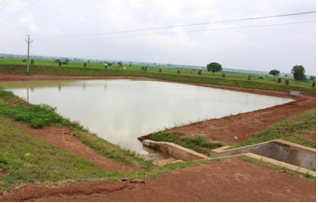BHUBANESWAR: In the last 16 years, Odisha’s agricultural production has doubled in real terms, clocking an average annual growth rate of about 4.5 per cent, higher than all-India average of 3.1 per cent. In 13 years (between FY 2002-03 and FY 2015-16), farmers’ income has grown more than seven times or at a compound annual growth rate (CAGR) of 16.5 per cent in nominal terms and 8.4 per cent in real terms. During the same period, the all-India average income of farmers grew at a CAGR of 11.7 per cent in nominal and 3.7 per cent in real terms.
Odisha’s new agriculture policy – Samrudhi – which was approved by the State Cabinet in December 2019 focuses on farmers’ well-being and has been formulated to build on the inherent strengths of its agriculture and allied sectors. “My Government is dedicatedly working towards development of farmers and my aim is to hike farmers’ income under the new agriculture policy,” Chief Minister Naveen Pattnaik had said at the inaugural function of a five-day agriculture expo, ‘Krushi Odisha-2020’ January 20, 2020 held at Janata Maidan in Bhubaneswar. The policy aims to increase farmers’ income and make the process inclusive of small and marginal cultivators while ensuring that the growth process is environmentally, economically and technologically inclusive, scalable and sustainable.
The broad strategies of the Agriculture Policy are designed on eight pillars for achieving the agriculture vision of Odisha. They are: leveraging science & technology, adaptation to climate change, domestic & global markets, resource use efficiency & productivity, up-scaling infrastructure, diversification of high value agriculture, human resources upgrading and strengthening institutions.
The article intends to discuss how the watershed development programme in Odisha has emerged to be a powerful tool for accomplishment of the government’s agriculture policies in general and ‘Samrudhi’ in particular. Watershed development, over a period of years, has reflected the increasingly wide acceptance of watershed management as an integrated approach to environmental protection and development, addressing conservation of water, land and biodiversity resources and improvement of local livelihoods through enhanced and diversified production.
Odisha has managed to treat nearly 35 per cent of the treatable watersheds. As many as 316 projects were sanctioned in six batches from 2009-10 to 2014-15 under Integrated Watershed Management Programme (MIWMP) with a total outlay of Rs 2188.35 crore. However, 38 projects of batch 5 (sanctioned during 2013-14) and 38 of batch 6 (sanctioned during 2014-15) were deleted from central assistance list affecting the implementation of respective project activities.
The expenditure under batch 3 & batch 4 projects during 2019-20 has scaled new heights from Rs 33.47 crore in December 2019 to Rs 85.61 crore in January 2020. The state has further been sanctioned Rs 44 crore and thus there has been a total sanction of Rs 81.54 core from November 2019 to February 2020 corresponding to the tenure of Satyabrata Sahu, IAS as Additional Secretary, DoLR.
IWMP has so far supported creation of more than 46,144 ha of protective irrigation in watershed areas. The reduction of rural poverty through livelihoods promotion has been a unifying goal of the watershed development programme.
In collaboration with ICAR- Central Institute for Women in Agriculture (CIWA), and OUAT, the IWMP programme has supported 500 women SHGs to access and use women-friendly ergonomically designed farm tools. The programme intends to reduce the women’s drudgery issues in paddy based farm operations, increase work efficiency and enhance their income.
The experience of working with the maize growers has enriched the watershed management programme in Odisha. Inclusion of poor farmers in a promotion programme and motivating them to risk their scarce resources for maize cultivation was a real challenge. The farmers were trained on good production practices and processing of maize as per industry standards. Increased production coupled with post harvest management and linkage with the existing market could help the group members bring in substantially higher earning form their marginal rain fed lands.
The watershed programme has showcased consolidated efforts in Nuapada district.
IWMP has supported the formation of 2,185 watershed associations and 31,235 SHGs.
A 10-year impact evaluation study by Odisha Remote Sensing Application Centre (ORSAC) shows a positive change in crop intensity, canopy cover and watershed area of Bhatli Micro Watershed in Bargarh district by 8.4 per cent, 54 per cent and 11 per cent respectively. There has been decrease in the waste land in the same watershed by 72 per cent for the period 2005-06 to 2015-16.
Encouraging results have been reported in several impact studies undertaken by ORSAC, NIRD and NRSC as well as third party agencies.
Gen next watershed projects
Watershed management should account for climate change impacts. They must employ technological advancements and holistic, cross disciplinary approaches to ensure watersheds continue to serve their ecological, social and economic functions. To cope up with the changing demands, Odisha has been negotiating with the World Bank for a USD 60-70 million project “Rejuvenating Watersheds for Agricultural Resilience through Innovative Development (REWARD)” – which aims to improve land and water conservation and climate resilience in selected watersheds and strengthen capacities of national and state institutions to deliver more effective science-based watershed development programme. The project has been conceived based on the experience of the World Bank assisted Sujala-III Project in Karnataka. REWARD will provide inputs & tools needed for site-specific planning & implementation of various programs thorough cross cutting technologies.
Creating more effective watershed development projects can not only alleviate water stress. These projects can help increase awareness of ecosystem services, build resilience to climate change, and improve overall quality-of-life in rural areas. This is the ultimate purpose of the Agriculture Policy – Samrudhi.
Hemant Kumar Panda, Director, Technical (Soil Conservation)
